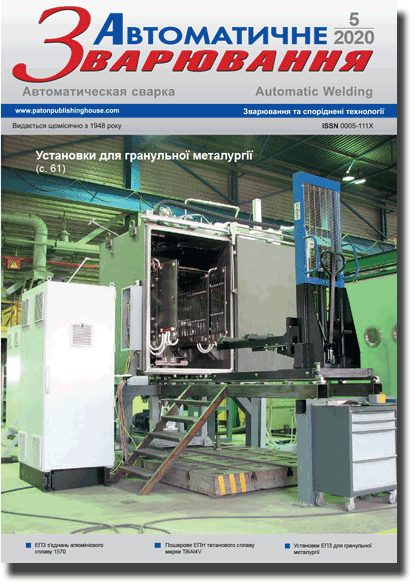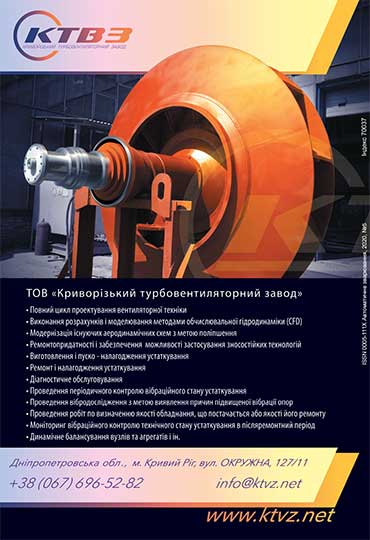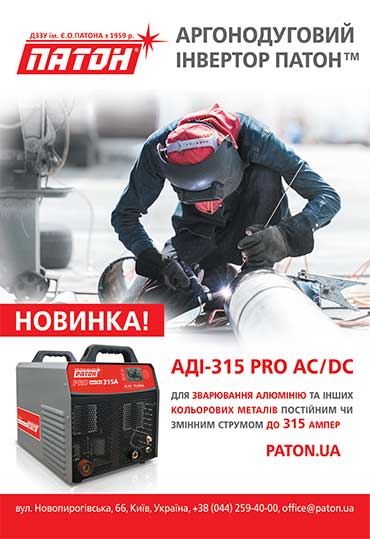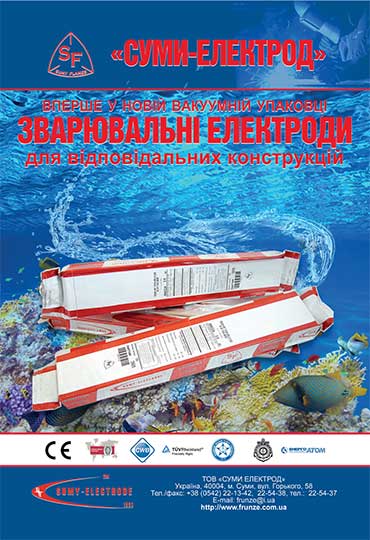| 2020 №05 (01) |
DOI of Article 10.37434/as2020.05.02 |
2020 №05 (03) |
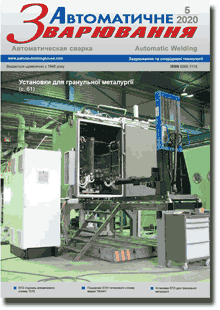
"Avtomatychne Zvaryuvannya" (Automatic Welding), #5, 2020, pp. 10-15
Effect of mode of electron beam welding, heat treatment and plastic deformation on strength of joints of aluminum 1570 alloy
V.V. Skryabinsky, V.M. Nesterenkov, M.O. Rusynyk, V.R. Strashko
E.O. Paton Electric Welding Institute of NAS of Ukraine, 11 Kazymyr Malevich Str., 03150, Kyiv, Ukraine. E-mail: office@paton.kiev.ua
The effect of the rate of hardening the weld metal during EBW process and the temperature of the subsequent heat treatment on the strength of welded joints of aluminum 1570 alloy was studied. The rate of “hardening” the weld metal was measured by submerging thermocouple into the molten metal of weld pool. At the increase in welding speed from 2.8 to 16.8 mm/s, the rate of "hardening" grows from 5∙102 to 1∙104 °C/s and the subsequent heat treatment of welded joints increases their strength to the level of strength of the base metal of stamped semi-finished products of 1570 alloy. It was established that during electron beam welding, the welding speed and, consequently, the rate of «hardening» do not affect the strength level of heat treated joints. The optimal mode of heat treatment is artificial aging at a temperature of 350 °C and 1 hour duration. It is possible to increase the strength of welded joints of 1570 alloy to the level of strength of rolled plates by 30% applying a cold plastic deformation or by 20% applying deformation with a subsequent artificial aging. 10 Ref., 3 Tabl., 9 Fig.
Keywords: electron beam welding, aluminum alloy, welded joints, welding speed, heat treatment, strength
Received: 14.04.2020
References
1. Mukhachev, A.P., Kharitonova, E.A., Skipochka, D.G. (2016) Scandium and its alloys with aluminium. Voprosy Atomnoj Nauki i Tekhniki, 1, 45–50 [in Russian].2. Drits, M.E., Toropova, L.S., Bykov, Yu.G. (1980) Influence of REM on mechanical properties of alloy Al-6,5 % Mg. Metallovedenie i Termich. Obrab. Metallov, 10, 35–37 [in Russian].
3. Elagin, V.I., Zakharov, V.V., Rostova, T.D. et al. (1991) Structure and properties of wrought semi-finished products from aluminium alloys with scandium. Tekhnologiya Lyogkikh Splavov, 12, 21–28 [in Russian].
4. Drits, M.E., Pavlenko, S.G., Toropova, L.S. et. al. (1981) On mechanism of scandium effect on improvement of strength and thermal stability of alloys of Al–Mg system. DAN SSSR, 227(2), 353-356 [in Russian].
5. Elagin, V.I. (1970) About alloying of wrought aluminium alloys with transition metals. In book: Physical metallurgy of alloys of light metals. Moscow, Nauka, 51–59 [in Russian].
6. Filatov, Yu.A. (2014) Alloys of Al–Mg–Sc system as a special group of wrought aluminium alloys. Tekhnologiya Lyogkikh Splavov, 2, 34–41 [in Russian].
7. Drits, M.E., Toropova, L.S., Anastasieva, G.K. et al. (1984) Influence of homogenizing heating on properties of alloys of Al–Sc and Al–Mg–Sc system. Izv. AN SSSR, Metally, 3, 196–201 [in Russian].
8. Berezina, A.L., Segida, E.A., Monastyrskaya, T.A., Kotko, A.V. (2008) Influence of crystallization rate on abnormal oversaturation of Al–Mg–Sc alloys. Metallofizika i Novejshie Tekhnologii, 30(6), 849–857 [in Russian].
9. Fedorchuk, V.E., Kushnaryova, O.S., Alekseenko, T.A., Falchenko, Yu.V. (2014) Peculiarities of alloying of weld metal of high-strength aluminium alloy welded joints with scandium. The Paton Welding J., 5, 30-34. https://doi.org/10.15407/tpwj2014.05.05
10. Ternovoj, E.G., Bondarev, A.A. (2012) Electron beam welding of thick-wall shells of aluminium AMg6 and M40 alloys. Ibid., 4, 8–14.
Advertising in this issue:
The cost of subscription/purchase order journals or individual articles
| Journal/Currency | Annual Set | 1 issue printed |
1 issue |
one article |
| TPWJ/USD | 384 $ | 32 $ | 26 $ | 13 $ |
| TPWJ/EUR | 348 € | 29 € | 24 € | 12 € |
| TPWJ/UAH | 7200 UAH | 600 UAH | 600 UAH | 280 UAH |
| AS/UAH | 1800 UAH | 300 UAH | 300 UAH | 150 UAH |
| AS/USD | 192 $ | 32 $ | 26 $ | 13 $ |
| AS/EUR | 180 € | 30 € | 25 € | 12 € |
| SEM/UAH | 1200 UAH | 300 UAH | 300 UAH | 150 UAH |
| SEM/USD | 128 $ | 32 $ | 26 $ | 13 $ |
| SEM/EUR | 120 € | 30 € | 25 € | 12 € |
| TDNK/UAH | 1200 UAH | 300 UAH | 300 UAH | 150 UAH |
| TDNK/USD | 128 $ | 32 $ | 26 $ | 13 $ |
| TDNK/EUR | 120 € | 30 € | 25 € | 15 € |
AS = «Automatic Welding» - 6 issues per year;
TPWJ = «PATON WELDING JOURNAL» - 12 issues per year;
SEM = «Electrometallurgy Today» - 4 issues per year;
TDNK = «Technical Diagnostics and Non-Destructive Testing» - 4 issues per year.





